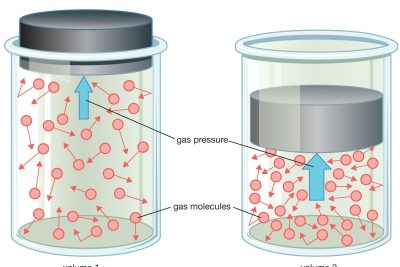
Robot Science: Definition, History, Uses, Types, and Facts

Robot science is a fascinating and rapidly evolving field that encompasses the design, construction, operation, and use of robots. It merges elements of engineering, computer science, and artificial intelligence to create machines that can perform tasks traditionally executed by humans. As we delve into the realm of robot science, we discover not only its principles but also its profound impact on various industries and everyday life.
The journey of robot science has been remarkable, evolving from the early conception of automatons to the complex robots that we see today. These technological marvels have made significant contributions across different sectors, demonstrating capabilities that range from mundane tasks to intricate operations in hazardous environments. Understanding the definition, history, applications, types, and facts about robots will illuminate the incredible role they play in modern society.
Definition of Robot Science
Robot science refers to the interdisciplinary field that focuses on the design and development of robots, tools equipped with sensory feedback and decision-making abilities. This discipline encompasses not only the physical construction of robots but also the programming and algorithms required to enable them to interact with their environment intelligently. Robotics integrates elements from various fields, including mechanics, electronics, and computing, to create machines that can perform autonomously or assist in human tasks.
The Core Elements of Robot Science
- Mechanical Engineering: The physical structure of robots, including limbs and joints.
- Electrical Engineering: Power systems and sensors that allow robots to gather data from their surroundings.
- Computer Science: The algorithms and programs that enable robots to process information and make decisions.
History of Robotics
The history of robot science dates back to ancient civilizations, where myths and stories depicted artificial beings. However, the modern era of robotics began in the 20th century. One of the first instances of a programmable robot was the "Unimate," designed by George Devol in the 1950s. This invention marked the beginning of industrial robotics, which revolutionized manufacturing processes.
Key Milestones in Robotics History
- 1956: The first industrial robot, Unimate, was used in automotive manufacturing.
- 1970s: Development of mobile robots, such as Shakey, which could navigate through environments.
- 1980s: Introduction of autonomous robots and advancements in artificial intelligence.
- 2000s: Rise of consumer robots, including robotic vacuum cleaners and entertainment robots.
Applications and Uses of Robots
Robot science has a wide array of applications that span multiple fields including manufacturing, healthcare, agriculture, and even entertainment. Each of these sectors utilizes robotics for efficiency, safety, and enhanced capabilities.
Robotic Applications in Various Sectors
- Manufacturing: Robots are extensively used for assembly lines, welding, and painting, improving speed and precision.
- Healthcare: Surgical robots assist surgeons in operations, providing precise movements in complex procedures.
- Agriculture: Agricultural robots automate planting, harvesting, and monitoring crop health.
- Entertainment: Robots are used in theme parks and movies, bringing characters to life and enhancing user experiences.
Different Types of Robots
The field of robot science encompasses various types of robots, each tailored for specific tasks and environments. Understanding these classifications helps to appreciate the diversity of robots available today.
Classification of Robots
- Industrial Robots: Used primarily in manufacturing for tasks like assembly, painting, and packaging.
- Service Robots: Designed to assist humans in tasks such as cleaning and security.
- Humanoid Robots: Robots that resemble humans in appearance and behavior, like ASIMO by Honda.
- Autonomous Mobile Robots (AMRs): Robots that can navigate environments, such as delivery drones.
Interesting Facts about Robots
The fascination with robot science extends beyond their functionality; numerous intriguing facts highlight their impact and future potential.
Fascinating Insights into Robotics
- Robots can work continuously without breaks, significantly increasing productivity compared to human labor.
- Some robots are equipped with AI, enabling them to learn from their interactions with the environment.
- The term "robot" was first coined by Karel Čapek in his 1920 play titled "R.U.R." (Rossum's Universal Robots).
- Robots are increasingly used in fields such as space exploration, performing tasks on planets and moons where humans cannot go.
Future of Robotics
The future of robot science holds promising advancements that could transform industries and life as we know it. As technology continues to evolve, we can expect robots to become more intelligent, adaptable, and integrated into our daily lives.
Emerging Trends in Robotics
- Artificial Intelligence: AI will enhance robot decision-making and learning capabilities.
- Collaboration with Humans: Collaborative robots (cobots) are designed to work alongside humans safely.
- Telepresence Robots: These robots allow remote operation, bridging the gap between physical and virtual presence.
Conclusion
In conclusion, robot science is an extraordinary field that continues to innovate and expand. From the early days of programmable machines to modern advancements in AI and machine learning, robotics has proven to be pivotal in shaping our future. As we explore the definition, history, applications, types, and fascinating facts about robots, it is clear that they will play an increasingly significant role in society, transforming how we work, live, and interact. The continual evolution of robot science promises a world where robots become integral companions, enhancing human capabilities, serving critical needs, and embarking on adventures far beyond our reach.
Did you find this article helpful? Robot Science: Definition, History, Uses, Types, and Facts See more here Education.
Leave a Reply






Related posts